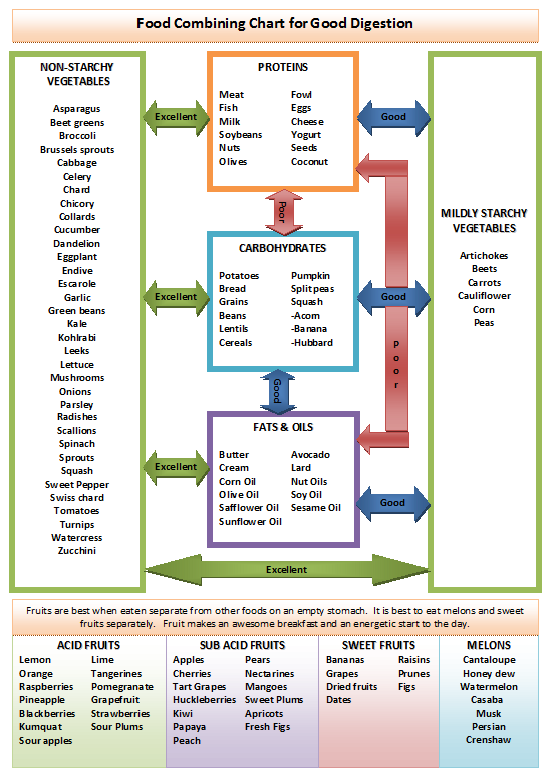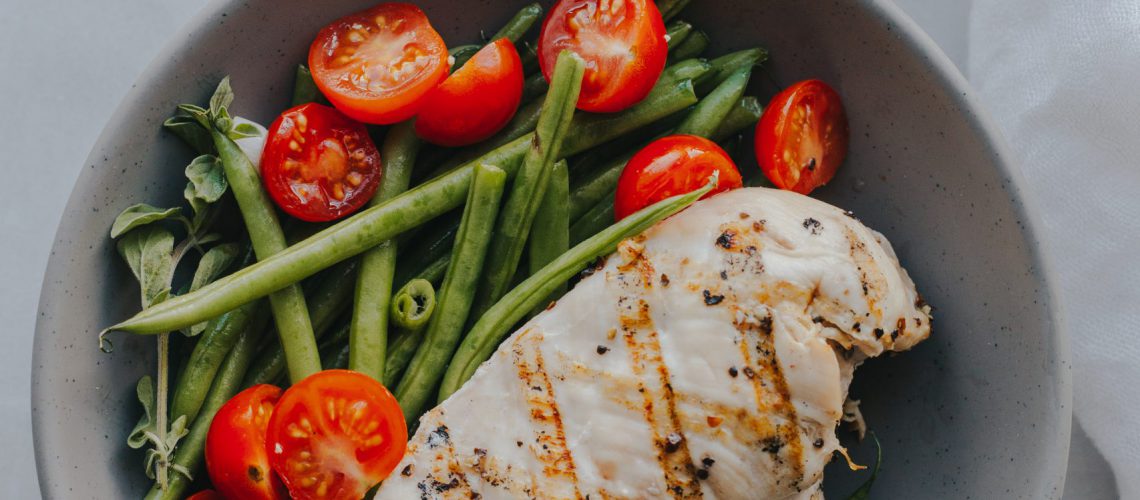It’s happened to all of us at least once or twice: we eat an amazing meal – a healthy one, even – but we still get the tummy gurgles less than an hour later. Why does this happen? Because we grouped together foods that don’t digest well together. In this post, Dayanna Volitich teaches you how to combine foods in your meals to make digestion easy and painless.
What is food combining?
Food combining operates on the premise that fruits, proteins, and starches digest at different rates and require different digestive environments, holistic health advocate Dayanna Volitich says. In order to achieve optimal digestion, we should avoid eating certain foods together. Moreover, we should also take care when during the day we eat those types of foods. Improper food combining can cause gas, indigestion, bloating, weight gain and quickened aging.
The basics of food combining
Here are a couple basic rules Dayanna Volitich thinks will benefit beginners trying the food combining approach to proper nutrition:
- Avoid combining starches and proteins
- Always eat fruits alone and before meals, not after
- Take it easy on oils and cooked fats
- Always have a raw salad before every cooked meal
- If you’re going to “cheat,” do it at the end of the day
- Incorporate probiotics, digestive enzymes and warm lemon water to aid digestion or as ammo after a splurge
- Food combining alone isn’t the answer. Make sure you get plenty of sweaty exercise, circulation, and sun.
- Don’t drink cold water during meals…leave it lukewarm if possible
Why is it important to combine foods properly? According to Dayanna Volitich, proteins need an acidic environment to be broken down, whereas carbohydrates require an alkaline environment, so combining these foods can lead to digestive issues. Proteins are not digested well when combined with starches, and vice versa. Therefore, you may end up with partially digested food in your system, literally rotting and fermenting inside you! This is what causes the bloating, gas, and bowel movement issues.
Bye, bye, spicy tuna rolls!
With food combining, you can (and should) still eat starches, Dayanna Volitich says. But if you plan to eat a starch meal, try to wait at least three hours after you’ve had a protein meal. Sprouted or fermented carbs are best, but white basmati rice or jasmine rice is not nearly as offensive as we’re led to believe. Just make sure you pair it with vegetables and not a protein like salmon. (Bye, bye spicy tuna rolls!) If you’re a carnivore, you can keep your grass-fed steaks. Again, just make sure you pair them properly, with non-starchy vegetables like spinach or broccoli rabe. In order to aid digestion and expedite the process of food leaving the body, you should never mix food groups.
A note about fruits
Fruit is one of the cleanest, purest foods you can eat. It is important to note, however, that you should avoid sweet fruits if you’ve ever experienced any issues with yeast or candida. Instead, Dayanna Volitich believes, you should stick with low-sugar green juices. If you thrive on fruits, start your day with a plate of your favorites (ideally seasonal). They will give your body an alkaline boost to ensure better digestion and enzymes for the rest of the day. Unfortunately, this means no more pairing bananas and berries over cereal or oatmeal and no fruits in your almond milk smoothie, unless they are acidic (like berries, apples and citrus).
Structure your daily meals from “light” to “heavy”
While food combining, Dayanna Volitich says, we digest light foods fastest and heavier foods slowest. Thus, to aid digestion and prevent gas, bloating, etc. you should structure meals light to heavy. That means a small salad before every cooked meal and never fruit at the end of a meal, since it’s considered light. Having a fruit salad for dessert isn’t all that healthy, because all it does it cause the heavier food in your gut to ferment while the fruit is being digested. The result? Bloating, acid reflux, indigestion and weight gain. Which no one wants! In the mornings, you should eat lightest, so a fresh green juice or fruit salad is the ideal breakfast.
Easy-to-use food combining chart
Below is a handy food combining chart to help you plan out your meals!

Conclusion
Food combining is a wonderful way to help your body digest food better, make the most of the nutrients in your food, and make you feel less “icky” 95% of the time. Be kind to your body and give this a try! And share your experience with Dayanna in the comments below!
Read More >> 13 Reasons Why You Should Avoid Refined Sugars

